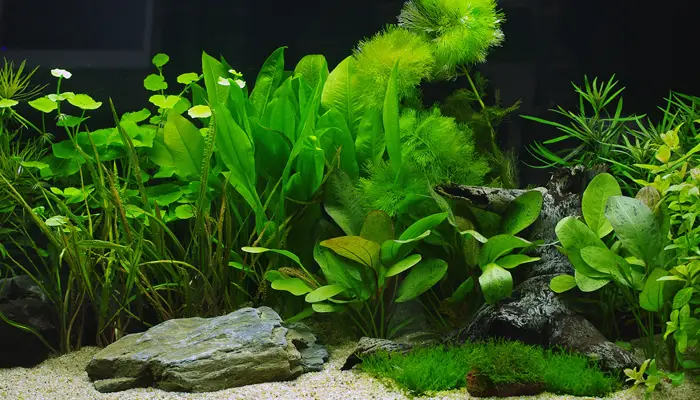Applied Biochemistry, Predictive Nutrient Modelling & Ecosystem Engineering for Professional Aquascapers
By ProHobby™ — Delhi NCR’s Leading Scientific Aquarium Specialists
🌿 INTRODUCTION — THE SHIFT FROM “PLANTED TANKS” TO “ENGINEERED AQUATIC SYSTEMS”
Level 0 aquarists learn nutrients.
Level 1 aquarists understand ionic competition.
Level 2 aquarists predict imbalances before they occur.
Level 3 aquarists engineer entire biological pathways.
Together, they create the complete scientific framework behind the world’s most stable planted aquariums.
You’ll learn:
- Nutrient flow modelling
- Root-zone biochemical engineering
- Seasonal chemistry algorithms
- Predictive algae detection
- Light–carbon–nutrient synchronization
- Water-column vs substrate ion competition
- Redox balance & microbial pathway control
- CO₂ torque curves & diffusional efficiency
- Designing tanks to resist instability by default
This is the highest-level aquascaping knowledge publicly available.
⭐ SECTION 1 — THE ADVANCED BIOCHEMICAL MAP OF A PLANTED AQUARIUM
Most hobbyists imagine nutrient flow like this:
Dose → Plants → Done
But real planted aquariums behave more like complex chemical ecosystems with 10+ interacting pathways.
1.1 The 12 Nutrient Pathways in a Mature Tank
Every ion follows multiple competing routes:
- Water-column uptake
- Root-zone uptake
- Microbial mineralization
- Chelate binding/unbinding
- Precipitation reactions
- Adsorption to substrate
- CEC exchange
- Oxidation–reduction cycling
- Light-driven plant demand variation
- Biofilm sequestration
- Volatilization/off-gassing
- Filter-mediated transformations
Understanding these pathways is the basis for predictive control.
⭐ SECTION 2 — PREDICTIVE NUTRIENT MODELLING (“THE 6-VARIABLE GROWTH FORMULA”)
Growth in high-tech tanks is not limited by a single nutrient.
It is defined by:
Plant Growth Rate = (CO₂ Stability) × (Light Curve) × (Fe stability) × (Root-Zone O₂) × (N Availability) × (GH/K Ratios)
Each factor is multiplicative, not additive.
One variable dropping by 10% can reduce total growth by 40%.
This is why:
- CO₂ instability → instant BBA
- Low PO₄ → immediate GSA
- High GH → Fe lockout
- Poor flow → invisible local deficiencies
Predictive aquascaping means preventing the dips, not reacting to them.
⭐ SECTION 3 — CO₂ MEGA-SCIENCE: DIFFUSION, TORQUE & GAS FILM DYNAMICS
CO₂ is the SINGLE variable with the highest impact.
3.1 CO₂ exists as three chemical species
- CO₂ (aq) — plant-usable
- HCO₃⁻ — partially usable
- CO₃²⁻ — unusable
Delhi NCR’s high KH pushes water toward bicarbonate dominance → drastically reducing actual CO₂ availability.
3.2 The CO₂ Torque Curve
Each tank has a “torque point”:
- Below torque: CO₂ rises steadily
- At torque: CO₂ stabilizes where plants expect it
- Above torque: off-gassing accelerates → CO₂ falls again
More bubbles ≠ more CO₂.
More bubbles = more waste after a certain threshold.
Level 3 aquascapers tune:
- bubble rate
- surface turbulence
- diffusion efficiency
- gas-film disruption
- O₂ cross-interference
- light-timing coupling
CO₂ must peak exactly at lights-on, not after.
⭐ SECTION 4 — ROOT-ZONE BIOGEOCHEMISTRY (THE REAL ENGINE OF GROWTH)
4.1 The Substrate Oxygen Gradient
- Upper layer: aerobic (NO₃ → NH₄ assimilation)
- Middle: micro-aerobic (Fe³⁺ → Fe²⁺ conversion)
- Deep: anaerobic (P release, organic mineralization)
This gradient drives:
- iron solubility
- ammonia conversion
- nutrient exchange rates
- CEC capacity
- toxic gas management
Cheap substrates lack this gradient → unstable systems.
4.2 Substrate Aging Model
All substrates follow 4 stages:
- Leaching (0–6 weeks)
- Peak CEC (2–8 months)
- CEC saturation (8–18 months)
- Buffer exhaustion (18–36 months)
High GH (Delhi) accelerates stages 3–4 due to Ca/Mg saturation.
⭐ SECTION 5 — ADVANCED LIGHT–CO₂–NUTRIENT SYNCHRONIZATION
Plants do not consume nutrients linearly.
Their photosynthesis curve:
- Explosive first 4 hours
- Plateau next 2–3 hours
- Decline last 2 hours
Thus:
Micros must not be dosed at lights-on.
Iron oxidizes within 60 minutes in high-pH water.
Macros must support the initial 3–5 hour “CO₂ peak demand window.”
CO₂ must be at maximum at minute zero of the photoperiod.
This synchronization eliminates 90% of algae issues.
⭐ SECTION 6 — REDOX POTENTIAL: THE FORGOTTEN MASTER VARIABLE
Redox (ORP) dictates:
- microbial processing
- nutrient mineralization
- ammonia → nitrite → nitrate speed
- organic decomposition
- algae susceptibility
A stable high-tech tank has ORP between:
280–350 mV
ORP dipping below 250 mV predicts:
- BBA outbreaks
- bacterial blooms
- ammonia micro-spikes
Weeks before visible symptoms.
At Level 3, you monitor ORP weekly.
⭐ SECTION 7 — FLOW FIELD ENGINEERING (NOT “FLOW”)
Most tanks have dead zones with different CO₂ and nutrient densities.
Flow is not “water movement”—
it is mass transfer optimization.
Level 3 aquascapers:
- map flow using microbubble behavior
- achieve 100% circulation using toroidal loops
- eliminate stagnation pockets behind hardscape
- align CO₂ diffusion vectors with leaf structure
- set flow to match peak photosynthesis O₂ output
Flow determines where deficiencies show up in the scape.
⭐ SECTION 8 — PREDICTIVE ALGAE DETECTION (BEFORE IT APPEARS)
Algae is not a nuisance — it is a chemical indicator.
Early warning signs:
| Early Sign | Meaning | Upcoming Algae |
|---|---|---|
| O₂ production starts later | CO₂ deficiency | BBA |
| O₂ stops earlier | CO₂ drop curve | BBA |
| Surface film thickens | Low DO | Diatoms |
| Microbubbles reduce | CO₂ collapse | GDA |
| Leaf tips translucent | PO₄ low | GSA |
| Green tint in water | NH₄ spike | Hair algae |
Level 3 aquascapers correct these before algae manifests.
⭐ SECTION 9 — SEASONAL CHEMISTRY COMPENSATION (DELHI NCR)
Summer
- Higher bacterial rate
- Higher CO₂ off-gassing
- Higher Fe oxidation
- Higher plant metabolism
Adjustments:
- 10% higher CO₂
- Slightly lower photoperiod
- Use DTPA + EDDHA iron blend
Winter
- Lower CO₂ uptake
- Higher DO
- Slower bacterial activity
Adjustments:
- Slightly higher micro dosing
- Increase flow 10%
This is how ProHobby™ keeps aquariums stable during Delhi’s extreme seasonal shifts.
⭐ SECTION 10 — THE LEVEL 4 MASTER DOSE PLAN
CO₂ Tanks (High-Tech Professional)
- CO₂: 28–32 ppm, perfectly stable
- NO₃: 12–20 ppm
- PO₄: 1.5–2.2 ppm
- K: 20–30 ppm
- Fe: 0.05–0.1 ppm daily (DTPA/EDDHA)
- GH: 3–5
- KH: 1–3 (RO blend)
Non-CO₂ Tanks (Advanced)
- Ultra-stable low light
- Micros ≤ 50% of CO₂ tanks
- NO₃: 4–7 ppm
- PO₄: 0.1–0.3 ppm
Non-CO₂ tanks require the strictest chemistry discipline of all.
⭐ CONCLUSION — THIS IS HOW PROFESSIONAL AQUASCAPES ARE BUILT
Level 3 aquascaping is scientific ecosystem engineering, not hobby dosing.
At this level you:
- Predict nutrient behavior
- Model CO₂ distribution
- Engineer substrate biochemistry
- Master redox balance
- Prevent algae before it forms
- Maintain perfect stability all year
- Build tanks that grow plants automatically
This is the science behind ProHobby™ installations across Delhi NCR.
Also read:
#AdvancedAquascaping, #PlantedTankScience, #AquariumChemistry, #CO2Injection, #NutrientDynamics, #AquascapeOptimization, #DelhiAquascaping, #HardWaterAquarium, #HighTechAquarium, #MacroMicrosBalance, #AquariumFertilization, #ChelatedIron, #AquariumSubstrateScience, #CECSubstrate, #AquariumCO2Stability, #AquariumWaterParameters, #AquariumIonicBalance, #ProfessionalAquascaping, #ProHobby


